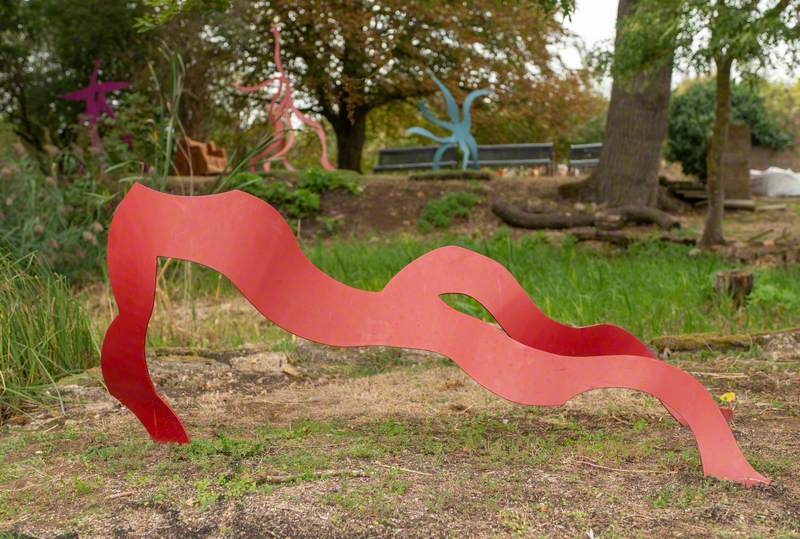Art charity Art UK has put the first of many thousands of sculptures online, from collections and public places all across the country. Browse sculpture here.

Evenlode – Bernard Schottlander (1924–1999); Milton Keynes City Discovery Centre; image.artuk.org
Eve is a beautiful, biblical sculpture that Auguste Rodin originally intended to be part of his ambitious Gates of Hell project in Paris. Today she enjoys a spot which the artist could never have imagined – outside a Nando’s in Harlow.
Rodin’s stunning 1882 statue is one of the first thousand publicly owned sculptures to be listed in a new UK database being created over the next two years.
The charity Art UK has already documented Britain’s publicly owned oil paintings, of which there are more than 200,000. On Thursday it announced that sculptures were next.

The project is in its early stages but is already eye-opening, said the director of Art UK, Andrew Ellis. He said: “The variety, the range, is just stunning and what is extraordinary is that it is going to be so much more global.

“Paintings are predominantly a western European tradition but the sculpture collection we are bringing together is from across the world, and you can see that already. There are Buddhas, there are Hindu reliefs in Northampton from the 12th century and that is just the first thousand records.”
Art UK said its aim was to democratise access to the nation’s public art collection, much of which is in storage and not easily viewable. By the end of 2020 it estimates about 150,000 sculptures will be viewable online.
Eve was acquired for £2,360 from Paris’s Rodin museum on behalf of the Harlow Development Corporation in 1959. It is a limited edition cast of a statue the artist originally conceived as being part of his Gates of Hell, an unfinished project he continued to obsessively work on until his death in 1917.
The Rodin artwork is one of an abundance of fine and cared for sculptures in the Essex town. Harlow also displays works by acclaimed artists such as Henry Moore, Elisabeth Frink, Barbara Hepworth and Lynn Chadwick.

The database will show the highs and lows of sculpture in public places in the UK. Some look amazing, others less so, such as Walter Bailey’s Carved Oak Sculpture, which is pictured in its central Brighton location with graffiti on it, in a drab setting of concrete and bins.
Ellis said it would be a useful audit of the condition of the UK’s public sculpture, pointing to the vandalism last week of a Boer war memorial in Glasgow’s Kelvingrove Park. Art UK has the before and after photographs.
Other sculptures among the first thousand going online include a mid-19th century plaster bust of William Wordsworth owned by Dove Cottage; and a colourful 2016 statue of Oor Wullie in the stores of Dundee Heritage Trust.
The very first sculpture to be photographed for the project is Jacob Epstein’s 1918 sculpture of the head of Italian arts patron Marchesa Luisa Casati Stampa di Soncino, in Southend’s collection.
Ellis said the project would prompt wider questions. For example, how badly are female artists represented, and what is being done to redress the balance? Is it time to rethink how female nude sculptures are displayed? How do we talk about works that commemorate people who profited from slavery and colonialism?
There would also be mysteries to be solved with so many pieces depicting unknown subjects.

The project, which will record sculptures from the last 1,000 years and not antiquities, is expected to cost £3.8m. The National Lottery Heritage Fund is providing £2.8m with the remainder coming from a range of donors.
The artist Yinka Shonibare, whose 2002 work Untitled (Dollhouse) is in Bradford’s collection, is Art UK’s 2019 patron and he praised the charity’s efforts. “Public sculpture is the most democratic way to share art,” he said. “It transcends race, class, or economic status.”
guardian.co.uk © Guardian News & Media Limited 2010
Published via the Guardian News Feed plugin for WordPress.

